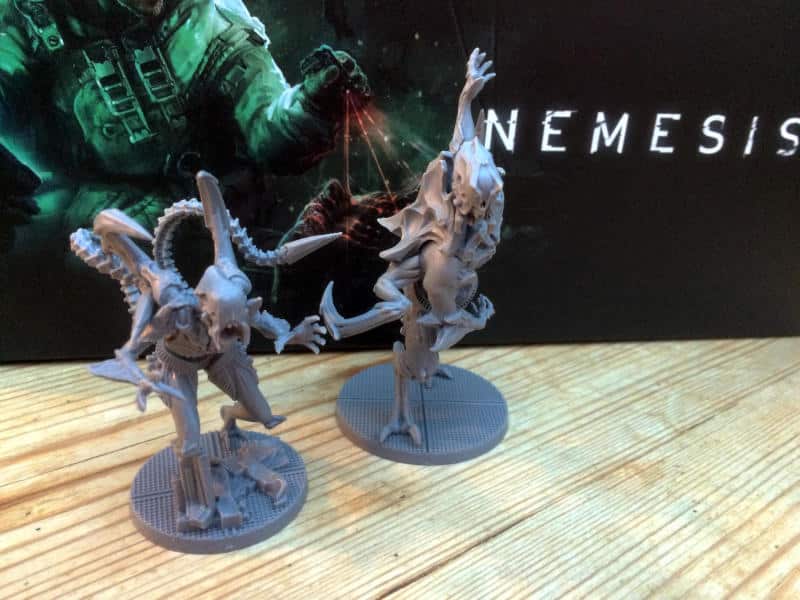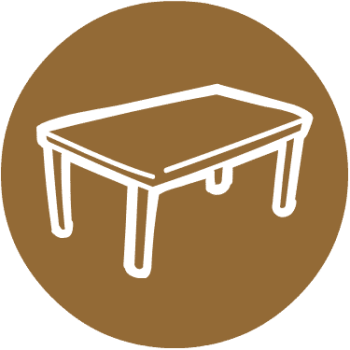Atmosphere in board games is one of those things that is felt. It is not just about how a game looks or sounds, nor simply the story it tells. Instead, atmosphere is the subtle, almost elusive quality that emerges from the right mixture of art and illustrations, sound, gameplay and a player’s imagination. It is what remains with us when all the noise fades and we are left with a sense of immersion and feeling unique to that game world. In this article, I want to explore what atmosphere means in board games and how it can be crafted.
Listen to the Audio Version
Intro Music: Bomber (Sting) by Riot (https://www.
Surrounded by Hayden Folker | https://soundcloud.
Music promoted by https://www.
Creative Commons / Attribution 3.0 Unported License (CC BY 3.0)
https://creativecommons.
The Travelling Symphony by Savfk | https://www.
Music promoted by https://www.
Creative Commons / Attribution 4.0 International (CC BY 4.0)
https://creativecommons.
Necromancer Obediah (The Complete) by Solas Composer | https://www.
Music promoted by https://www.
Creative Commons / Attribution 4.0 International (CC BY 4.0)
https://creativecommons.
Back Home by | e s c p | https://www.
https://escp-music.
More Than Visuals or Story
Everyone plays games for different reasons. Some just want to become “good” at a game and work out how to win, others enjoy the social element when playing with friends or family or prefer the challenge of a solo game. Yet, atmosphere somehow sits somewhat apart from these elements. Yes, there is some sort of immersion happening, but more on an emotional level.
When atmosphere works, it is subtle and complex, the “je ne sais quoi” that invites us to step inside a game’s world and feel it in a way that few other media can match. Unlike when watching films, reading books or listening to music, when we play board games, we actively interact with the world that the game creates. We are not just observers but participants. We create the story as we play within a world that reacts to our choices and actions.
The player’s imagination is, of course, vital to atmosphere. Without imagination, atmosphere will never emerge. A game that creates atmosphere leaves spaces for the mind to fill in, in a similar way to books. Too much detail leaves no room for imagination, no room to breathe or wonder. Too little, and the world feels empty or hollow. Creating this balance isn’t easy. Board games that deliberately leave room for exploration and mental engagement are best suited to create atmosphere.
Too many modern board games flood players with visual information, and their rulebooks leave no room for players to fill in the gaps, or the games are too abstract to give players any clues as to where their journey is going to take them. There are not many that find the perfect balance to allow players to wander off into the gameworld and dress it in whatever way their own imagination suggests.
Nemesis: A Case in Point
One game that illustrates how board games can create atmosphere is Nemesis by Adam Kwapiński. The game puts players into the cryogenic hibernation cells on a spaceship. The game begins as players first wake up feeling disoriented, confused, even fearful. At least, that’s how the rulebook sets the scene.
As you start playing, you feel exactly what the in-game characters feel. That’s because the rulebook, the game’s illustrations, the action card descriptions, mission cards and everything else only give enough information to get you started, but leave plenty of room for your mind to fill in gaps.
That is supported by the game telling you that, waking up from years of hibernation, all the players have only fragmented memories. So when one crew member is found dead with a gaping hole in their chest, panic sets in. Nobody knows what caused it. The trust between players evaporates rapidly. Most importantly though, atmosphere has been created out of seemingly thin air.
Of course, it helps if you have watched any of the Alien films, but even if you haven’t, you will feel the atmosphere. It is not just the imagery or story, but the way the game mechanisms force players to explore uncertain spaces and manage risks while watching their backs. The ship’s layout is revealed slowly as you move, which creates a creeping sense of dread and discovery. Many of the game’s mechanisms bring tension and turn your fellow players into potentially mortal enemies. These elements combine to produce an atmosphere that is immersive and deeply affecting. You feel trapped, anxious, and suspicious, just like the characters in a sci-fi horror story.

Heroes: Another Case in Point
In his design diary for one of his other games, Heroes, Adam Kwapiński, calls atmosphere a foundational design choice rather than an afterthought. Unlike many fantasy games that rely on familiar settings or artwork, Adam wanted to capture the emotional intensity of a duel between wizards. Powerful mages, dragons and spells are classic fantasy tropes, but what brings the game to life is how these create mechanisms that embody the frantic energy and focus required in a duel.
He introduced a real-time element where dice represent magical energy that players must harness under pressure. It’s this real-time element that mirrors the stress of casting spells in the heat of battle. As players, you are actively experiencing this stress when you roll and re-roll the dice. Additionally, the gameplay ebbs and flows between bursts of chaos and brief moments of calm, when players can plan and control the situation.
Adam notes that, although the mechanisms could theoretically fit other themes, their origin in a fantasy duel shapes the feel of the game, melding theme and play into one cohesive, immersive experience, and it is this that creates atmosphere. It’s more than just the combination of visual presentation, the story that the game tells, the game’s components and the rule set.
Atmosphere Matters
So, as we can see, atmosphere is more than an aesthetic bonus. It can shape how we feel about a game long after it has finished. It makes games more memorable, or at least it can lead to memorable moments in games. With the right atmosphere, playing a game is more than just moving counters or rolling dice. Crafting atmosphere requires the right balance between restraint and creativity from the designer. It means resisting the urge to fill every moment with information and details, instead giving players room to imagine, wonder, and emotionally respond to what is in front of them.
Nemesis demonstrates this well through its mix of hand management, dice rolling, random events, and exploratory movement on an initially unknown map. The gameplay can be straightforward, yet the uncertainty creates tension and emotional depth. Heroes does this similarly through its real-time element and gameplay rhythm.
Both games encourage role-playing. It is the emergent story, your imagination, that heightens immersion and deepens the atmospheric tension. In Nemesis, you might be explaining why you are holding an alien egg, or you might be convincing others to help you while hiding your true intentions. In Heroes, you might explain your bad dice rolls by the fact that your magical powers have waned or that evil sorcerers are interfering.
For me, atmosphere is a key reason I return to games like Nemesis. These games do not just show you a world, but they make you feel trapped, anxious, and fully immersed in their tense settings. It is that emotional resonance, born from a perfect blend of theme, mechanisms, and design choices, that transforms a collection of rules and board game components into a memorable experience.
This blog is free for everyone, but if you'd like to support it, here are some options.
Useful Links
- Nemesis review: https://tabletopgamesblog.
com/ 2022/ 06/ 18/ nemesis-saturday-review/ - Adam Kwapiński‘s design diary for Heroes: https://boardgamegeek.
com/ blog/ 1/ blogpost/ 46089/ designer-diary-all-about-the-atmosphere-or-the-des
Audio Version
Intro Music: Bomber (Sting) by Riot (https://www.
Surrounded by Hayden Folker | https://soundcloud.
Music promoted by https://www.
Creative Commons / Attribution 3.0 Unported License (CC BY 3.0)
https://creativecommons.
The Travelling Symphony by Savfk | https://www.
Music promoted by https://www.
Creative Commons / Attribution 4.0 International (CC BY 4.0)
https://creativecommons.
Necromancer Obediah (The Complete) by Solas Composer | https://www.
Music promoted by https://www.
Creative Commons / Attribution 4.0 International (CC BY 4.0)
https://creativecommons.
Back Home by | e s c p | https://www.
https://escp-music.
Playlist
These are the songs I listened to while I was writing this topic discussion article:






